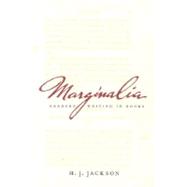Based on a study of thousands of books annotated by readers both famous and obscure over the last three centuries, this book reveals the intensity of emotion that characterizes the process of reading. For hundreds of years, readers have talked to other people in the margins of their books -- not only to authors, but also to friends, lovers, and future generations.
With an infectious enthusiasm for her subject, Jackson reflects on the cultural and historical value of writing in the margins, examines works that have invited passionate annotation, and presents examples of some of the most provocative marginalia. Imaginative, amusing, and poignant, this boo








